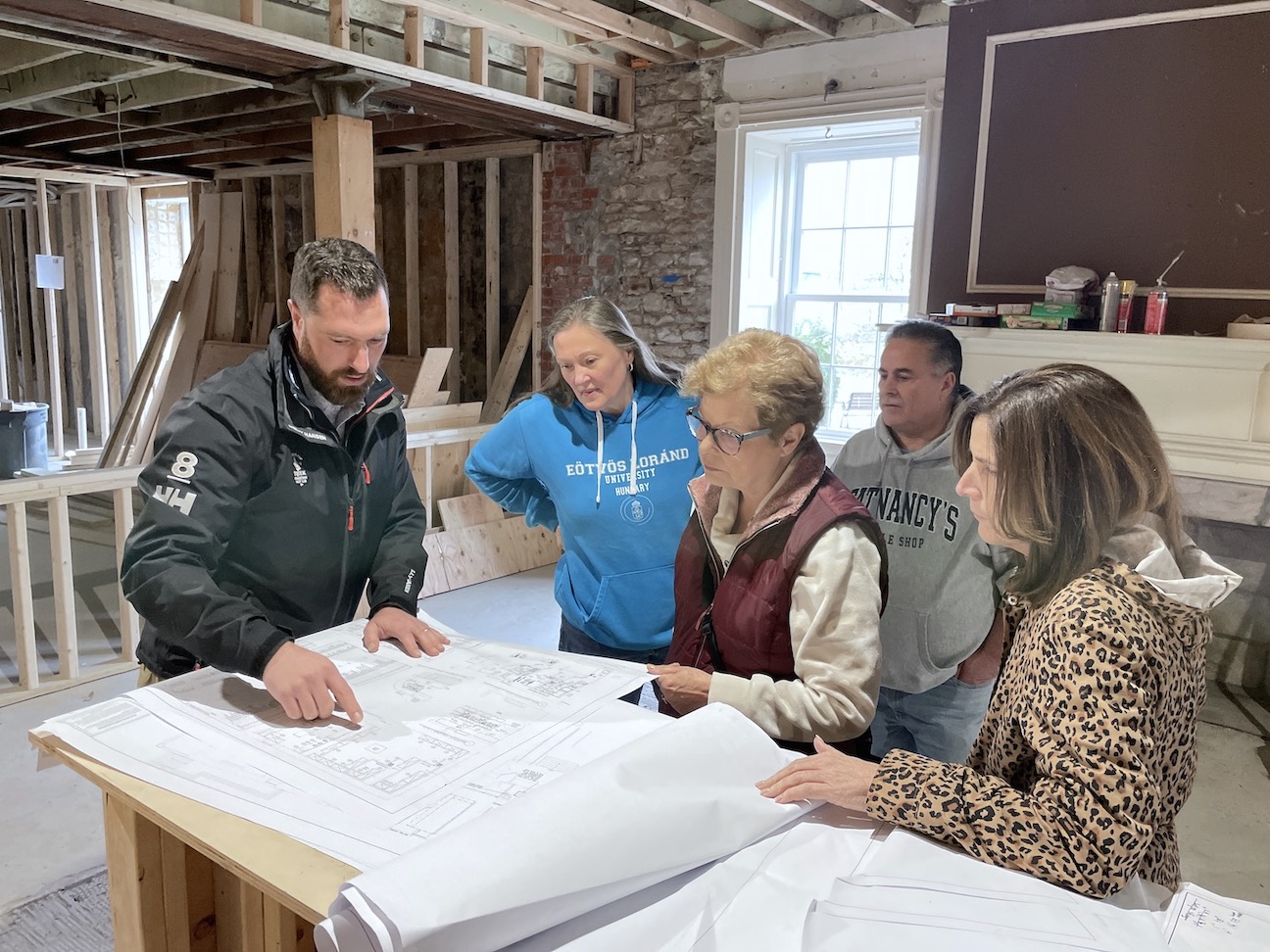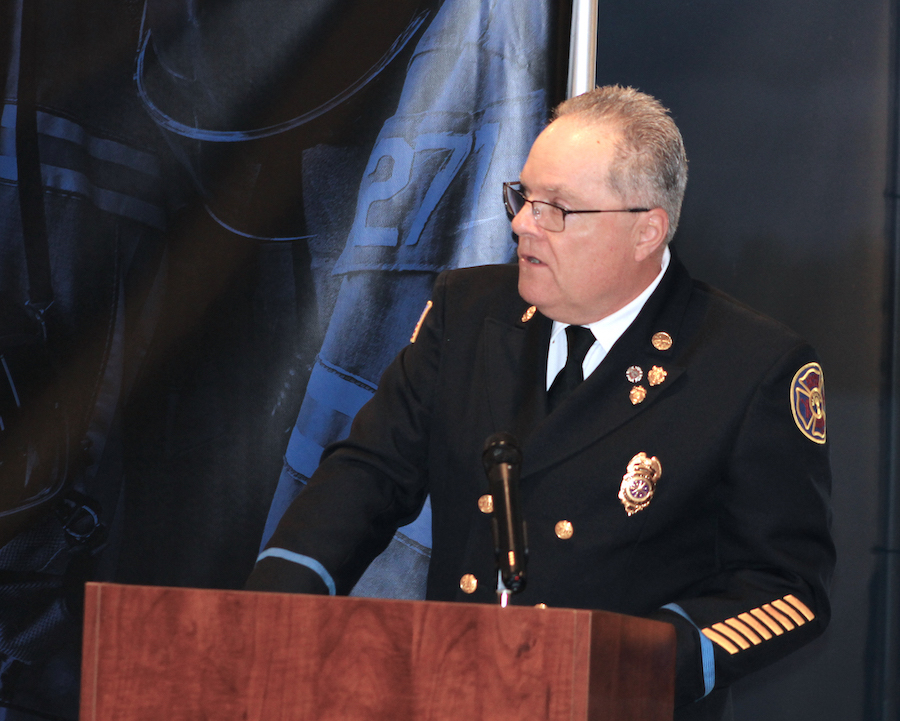Featured News - Current News - Archived News - News Categories
Plans event to raise awareness
Story and Photo by Alice Gerard
Senior Contributing Writer
Every three minutes, someone is diagnosed with a type of blood cancer. And approximately every nine minutes, someone dies of a form of blood cancer.
Dan McBride, who was the Relay For Life 2009 honorary survivor, died in 2015 of mantle cell lymphoma. In an Island Dispatch article in 2008, McBride talked about his battle with cancer. He said that, shortly before the 2006 “October Surprise” storm, he underwent a bone marrow transplant at Roswell Park Cancer Institute. "Ninety-five percent of my bone marrow was cancer."
Kim Kalman, who has participated in Relay For Life since 2007, explained her decision to be placed on the bone marrow donation registry with Be the Match: “We were all working with Relay. Dan was a good friend, and we all decided to get ourselves on the registry. In 2009, I got on the registry to help Dan McBride or whomever else I could have helped.”
Kalman’s decision to be placed on the registry changed her life. She is now a volunteer with Be the Match, and she is planning an event from 10 a.m. to 1 p.m. Sept. 16 at Town Hall to get the word out about donating bone marrow.
In October 2022, Kalman got the “call that most people never think they’re going to get. But I got it. I was a perfect match for a 62-year-old man who’s suffering from Myelodysplastic syndrome, which is a group of cancers in which immature blood cells in the bone marrow don’t mature and become healthy blood.”
One month later, Kalman and a companion, Joan Golda, were on a plane, traveling to Washington, D.C. They took the trip after Kalman went through an intense month of sometimes arduous preparation.
“At one point, I had 17 vials of blood taken from me to make sure I didn’t have any out-of-country blood disorder or anything like that,” Kalman said. “It was pretty surreal when it was happening because there were all these variables that could have taken me out of being that match. If there had been anything wrong, I could have gotten that call saying ‘We have to keep looking.’ Thank God, I never got that call. I was so nervous leading up to it. Every day, I was praying, ‘don’t get sick.’ I was wearing a mask everywhere, even though COVID was nearing its ending point. It all worked out. It is still surreal.”
“(Georgetown University Hospital paid for everything, and they paid for someone to go with me,” Kalman said. “I did have family who offered, but it was Thanksgiving. I had my friend, Joanie Golda, leave her family and change her plans and stay with me the entire time. The experience was wonderful. The hospital staff was wonderful. The surgeons were wonderful. The hotel was wonderful.”
Golda said she felt honored to be asked to travel with Kalman: “When she signed up for this, she asked me, ‘Would you consider being my companion if I get picked?’ Me? What an honor! I told her, ‘If you’re willing to donate bone marrow, my family will let me be your companion. I was super excited to be her person. I was going for her. She didn’t want to take me away from my family. My husband and son were fine with it, as was the rest of my extended family.”
Kalman said, “The surgeon was a pediatric oncologist. He did my surgery. He’s from the United Kingdom. He leaned over, and he was starting to tear up. He said, ‘We’re going to try to get as much as we can from you because this gentleman is big.’ I said, ‘Go big or go home. Why else would I be here?’ And I remember him leaning over after the surgery and saying, ‘We got it all, kid.’ ”
Kalman talked about writing anonymous letters to the recipient and getting anonymous responses. On the first anniversary of the donation, Kalman and the recipient will be permitted to meet.
“All I know is that the 62-year-old male is still doing very well. I’ve received two anonymous letters from him,” she said. “In the second anonymous letter from him, he said he is surrounded by many friends and family, and that I gave him the gift of time.
“We have to stay anonymous until our one-year mark and then we will get to know and meet each other. Right now, he has no idea of who I am or where I am from. I’m very much looking forward to the fact of his still being healthy in November. I feel that I won the lottery by getting this call from God that I was able to help save this guy’s life. I think we could all do things to someday be a hero to somebody in some way or another, and this is the chance I got.”
Golda said she observed Kalman experience a great deal of pain the day after the surgery.
“The pain got really bad during the night, and she didn’t wake me up,” Golda said. “When I woke up in the morning, she was struggling even to turn over. When she got back from the hospital, she still had the anesthesia in her and she wasn’t feeling too bad at all. She felt no pain. We ate dinner. But then she said, ‘I didn’t want to wake you up.’
“She kept saying, ‘Pray for the recipient. Pray that all went well.’
“The experience was watching her. Watching her excitement. Watching her heart to think that she was saving someone’s life. It was all that mattered to her. The pain didn’t matter. She kept saying, ‘I didn’t expect it to be quite this bad. Even with the pain, I would do it again if I knew it would save someone’s life.’ ”
Kalman, whose father is a two-time cancer survivor, acknowledged both the difficult and the uplifting aspects of bone marrow donation: “I was very sore, and it took a while, and I’m still recovering. They treated me great. You’re treated like you should be treated in that circumstance. You’re there to give part of yourself to save someone else. That was a wonderful experience.”
“Kim is the kind of person who loves with all of her heart,” Golda said. “When she knows you and when she loves you, she knows about you. She knows about her friends, and she cares about her friends. It’s all like what can she do for them? She is a giver. She’s an empath. She’s involved in so many things, it makes my head spin. She’s such a love, such a heart. She’d give you the shirt off her back.”
Kalman made sure to bring gifts to the staff at the nurses’ station in Georgetown University Hospital.
“She bought stuff that was Bills and Grand Island and Buffalo, stuff that was unique to them,” Golda said. “That’s another thing I was in charge of, to make sure I brought the gifts.”
Kalman said she was so moved by her experience that she decided to volunteer for Be the Match, to encourage others to consider donating bone marrow.
“I have so many friends and family come to me when I was recovering from the surgery, asking me how could they get on the list or if they were still on the list; and how do they sign up,” she said. “When I was healthy again, I took it upon myself, in true Kim fashion, to find out if there were any local events going on for Be the Match. I didn’t see any. I went and became an official volunteer for the Be the Match organization. Now I will be holding my own donor drive for people to sign up to be the match.
“I can’t wait for this event. Even if people are afraid to sign up or just want to learn about it, I just want to educate people who are curious about it to let them know how they can get involved. Or they might know somebody who would like to sign up and do that.”
Kalman said her goal is “just to educate people on the importance of getting involved, how they can help or if they know somebody who can help. I am hoping to spread the word as big as possible.”
“My goal is to educate and to get people to sign up on the registry,” Kalman said.
She explained that, for 85% of donors, the procedure is nonsurgical: “It’s called apheresis, which is peripheral blood stem cell transfusion. And there’s the way I did. It wasn’t easy, but it wasn’t super difficult. I really would just love to educate people and to let them know how they can get educated and sign up.”
Her advice to people who are already on the registry is “If you’re on the list, make sure that your contact information is current.”





























